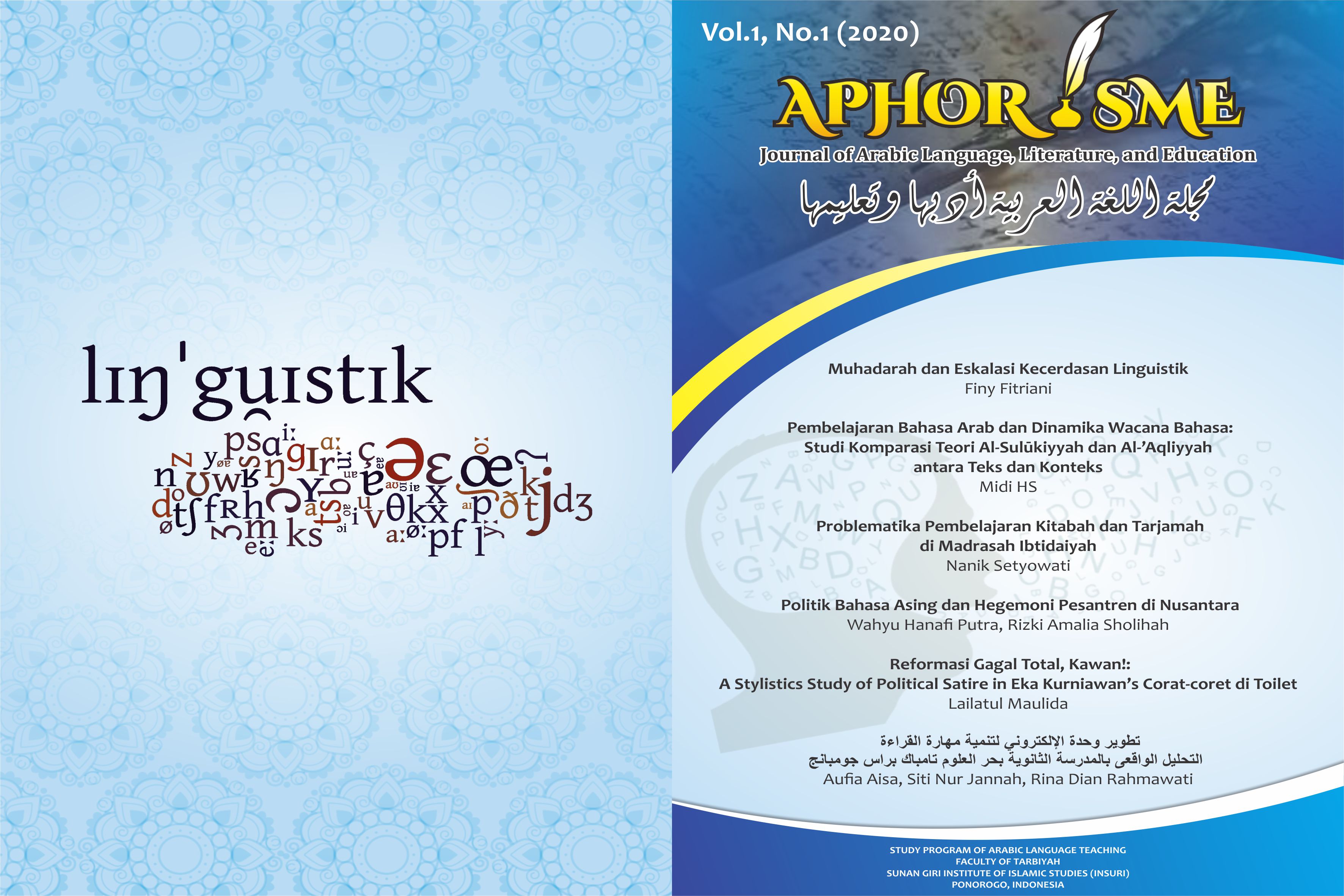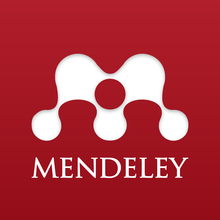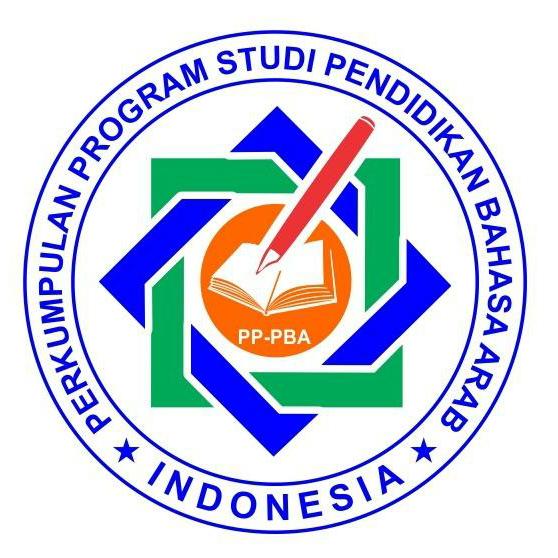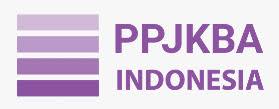Problematika Pembelajaran Kitabah dan Tarjamah di Madrasah Ibtidaiyah
DOI:
https://doi.org/10.37680/aphorisme.v1i1.323Keywords:
Problems, Writing, Translating, ArabicAbstract
The Arabic language is one of the competencies that must be mastered by the elementary school (Madrasah Ibtidaiyah/MI) students. However, in the course of learning Arabic, there are still various learning problems, especially in writing and translating Arabic. Speaking about the problem of learning Arabic, which was the object of research, the writers hoped to solve that problem or at least could reduce the gap. This study aimed to describe the learning patterns of writing skills and the ability to translate Arabic in MI, problems and find the right solution to support the learning of writing skills and the ability to translate Arabic in MI involving all components in the school, namely teaching materials, teachers, the principal's learning and policy process. This research is a qualitative study using descriptive-qualitative methods. The data used include two things, namely primary data and secondary data. Data collection technique was in the form of documentation. The researchers were trying to collect data relevant to learning Arabic in MI systematically, which were then analyzed by theory. The data analysis technique used grounded research in which the researchers analyzed the data and existing problems with the theory used. This research takes focus on the students of Class V Madrasah Ibtidaiyah Al-Jihad Karanggebang Jetis Ponorogo. Based on the data analysis, it was concluded that learning to write and translate Arabic in MI had been going well. However, there were still problems including lack of student interest, students' negative assumptions about Arabic, and students who were still at the level of reading (iqra'). Teachers' efforts in overcoming these problems included familiarizing students with the Arabic vocabulary (mufrodat) used in learning materials through the translating method and extra activities in the form of Foreign Language Development Programs.
References
Ahmad Fuad Effendy, (2009). Metodologi Pengajaran Bahasa Arab, Jombang: MISYKAT.
A Akrom Malibary dkk, (1976). Pedoman pengajaran Bahasa Arab pada Perguruan Tinggi/IAIN, Jakarta: Depag R.I.
Al Farisi M. Zaka, (2011). Pedoman Menerjemah Arab Indonesia, Bandung: PT. Remaja Rosdakarya.
Hermawan Acep, ( 2011). Metodologi Pembelajaran Bahasa Arab, Bandung : PT. Remaja Rosdakarya.
Jos D Parera, (1997). Linguistik Edukasional, Jakarta: Erlangga.
Muhaimin MA. Dkk., (1996). Strategi Belajar Mengajar, Surabaya: CV. Citra Media.
Rusyana, Yus, (1988). Bahasa dan sastra dalam Gamitan Pendidikan, Bandung: Diponegoro.
Sugiyono, (2008). Metode Penelitian Kuantitatif, Kualitatif, dan R&D, Bandung Alfabeta.
Ulin Nuha, (2012). Metodologi Super Efektif Pembelajaran Bahasa Arab, Jogjakarta: Diva Press.
Downloads
Published
Issue
Section
License
Authors who publish with this journal agree to the following terms:
Authors retain copyright and grant the journal right of first publication with the work simultaneously licensed under a Creative Commons Attribution-NonCommercial 4.0 International License that allows others to share the work with an acknowledgement of the work's authorship and initial publication in this journal.
Authors are able to enter into separate, additional contractual arrangements for the non-exclusive distribution of the journal's published version of the work (e.g., post it to an institutional repository or publish it in a book), with an acknowledgement of its initial publication in this journal.
Authors are permitted and encouraged to post their work online (e.g., in institutional repositories or on their website) prior to and during the submission process, as it can lead to productive exchanges, as well as earlier and greater citation of published work.





.jpg)


1.jpg)
